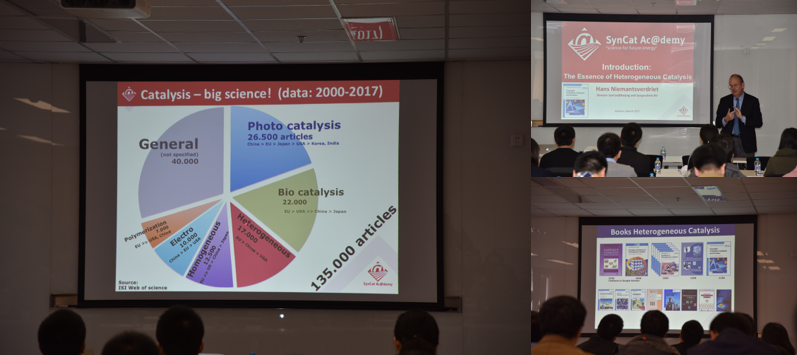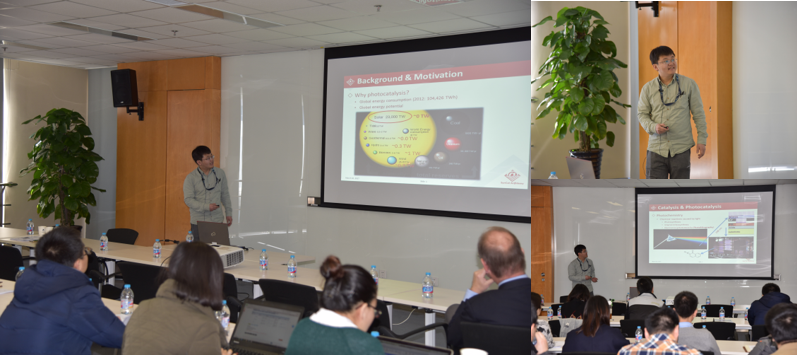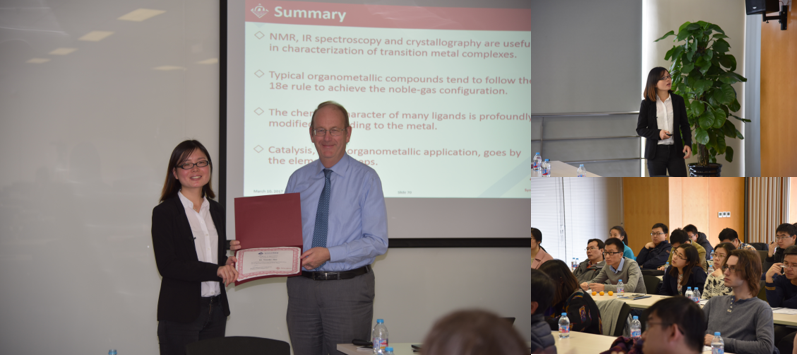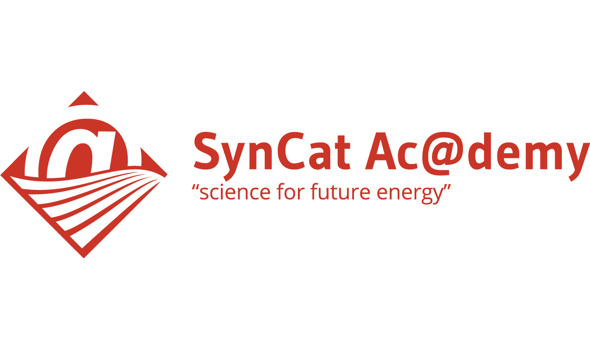3rd SynCat Ac@demy Catalysis School
by Dr Tingbin Lim
The 3rd SynCat Ac@demy Catalysis School was held on 10th March 2017, at the SynCat@Beijing Research Institute. This third installment of the series of Catalysis School workshops continues the ongoing effort of SynCat@Beijing to be not just a centre of expertise in catalysis research, materials science and surface chemistry, but also an excellent centre for graduate students and budding scientists to be grounded in the basic concepts of what is catalysis and their surrounding topics.
This latest workshop, completed in just one day, focused on three topics of a more specific nature compared to the previous two events, touching on the basics of surface mechanisms in heterogeneous catalysis, homogeneous catalysis, and photocatalysis. As for the previous installments, it was also made possible by the continued support of Synfuels China Technology, and attracted over 40 participants, mostly graduate students.
The morning started with an introductory lecture by Prof. Niemantsverdriet on the essence of catalysis, which framed the overall topic of catalysis in terms of its significance both industrially and academically, and then went on to explain some fundamentals of the adsorbate-surface interactions and reactions in heterogeneous catalysis. This was followed by a primer on photocatalysis, presented by Dr. Ren Su, who laid out the basic tenets and concepts of photochemistry and highlighted prominent examples of photocatalysis in the published literature.
Subsequently, Dr Yunzhe Jiao gave two successive lectures on the essential concepts involved in homogeneous chemistry: inorganic transition metal coordination chemistry as well as the most commonly encountered steps in homogeneous catalytic cycles. She then brought the concepts together in an application of the concepts to a simplified hydroformulation catalytic cycle.
Finally, the day ended with a lecture from Prof. Niemantsverdriet on some simple mechanisms of surface chemistry useful in understanding heterogeneous catalysis, as well as some introduction into the more complicated fields of catalysis involving metal oxides, which are also commonly encountered in many industrial catalytic cycles. As with all previous catalysis schools, a coursebook with all the important slides of the talks was distributed to the attendees, allowing all to make appropriate notes along with the lectures.
Although this latest workshop was the smallest in terms of attendance, it nevertheless continues to showcase the effort and determination of the SynCat Ac@demy in trying to become a place not just for excellent research, but also an institute that can provide good pedagogical material for scientists and researchers in catalysis during their early careers, something that is sorely lacking in many places that are supposed to train the next cadre of scientific problem solvers in this field. We will strive to continue this tradition in the years to come, and hope all will continue to support our endeavours in the future.
Dr. Tingbin Lim is a current researcher scientist at SynCat@Beijing.
Photography: Ajin Cheruvathur.
Published on March 16, 2017






